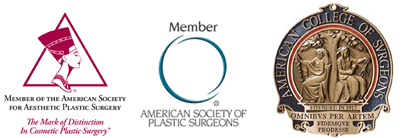Revisions, touch up, or redo operations are procedures done to improve or correct prior cosmetic operations. The revisions range from small procedures for minor or more subtle changes to big revisions for larger or more major changes. Revision surgery, sometimes called a touch up, is necessary occasionally after some cosmetic operations. When things don’t go exactly as planned after cosmetic operations, it can be very frustrating for the patient. However, I believe it is important to be more positive and understand that things can be improved. In general, I tell my patients, “Revisions are good!” This means they are successful with high frequency and usually give better results. They lead to improved satisfaction and happiness, because the patient gets a result that is better and improved. This educational writing is Part One and focuses on understand revision or redo procedures. It reviews why you should do it, what is involved, and healing and recovery. Part Two reviews expense, success, and satisfaction.

Why Do It?
Why are revisions or redo procedures necessary? Cosmetic operations improve us. They make us younger, thinner, flatter, and prettier. But they can’t make us perfect. They don’t make us into a movie star. They can’t make us look 30 years younger. Cosmetic operations have their limitations.
Surgery is an art too. Most people have heard this phrase before. Plastic surgery is more of an art than most medical fields. The “art” means that it is not an exact science. Healing varies from person to person. Incisions, scars, and recovery vary from one patient to another. All these factors play a role in why an operation might not be perfect in a person’s own mind or view point. It is important to understand what a plastic surgeon will describe as patients need to have realistic expectations.
If things aren’t perfect or as good as hoped for, then we need to learn what can be done to improve things. Can we get flatter? Can we get the wrinkle better? The next topic is what is involved.
What is Involved?
This ranges from very small procedures to more significant operations in scope. Small revisions or redo procedures are by far the most common. An example might be a “dog-ear” after a tummy tuck. This is a small pucker, in the incision, at the side or end. The last thing I do when finishing a tummy tuck or abdominoplasty, is check for dog-ears. This means I might do some extra liposuction to make it completely flat. I don’t stop until it’s flat. But surgery is an art. This means that you can still get a dog ear. Poor elasticity in the skin, swelling and bruising, and other healing factors can still lead to a small pucker. Should this happen, a revision or touch up could be necessary. In this case, it is very easy. It involves a local anesthetic and a 15 minute minor procedure. The dog ear is excised. It usually means a few more stitches to remove the pucker. Most go to work the next day and resume normal actives in short order. Satisfaction is usually extremely high with this touch up procedure.
Some revisions will be larger and more involved. Let’s give another example. If a woman has a breast augmentation, she might heal and soon wish or want a larger size. This is something we don’t want to happen. We want to love our new breast size. I work extremely closely with my patients on this choice. I call it “homework.” Much effort and work go into picking their size. But if they don’t like the size, the only option or recourse is another operation. This means more anesthesia and new implants. Actually, the operation is much easier than the first operation, because the muscle is already elevated. Patients can go back to a desk job often the next day! But it still is an operation, and this requires preparation and responsibilities before and after the procedure. Satisfaction is usually extremely high with this operation if done.
What exactly is involved varies from case to case. In the two examples above, one was very minor and one was more involved. I review in detail options with my patients. This way they have a good idea of what is happening and all choices.
Healing and Recovery
Healing and recovery vary depending on the operation being done. Some procedures will have quick healing and recovery, while others will have longer ones.
Let’s take an example. If a breast implant doesn’t settle perfectly, then a redo can be necessary. The procedure involves lowering the implant to a better location. Even though the first operation typically has significant pain, because of the muscle work, the revision or touch up is dramatically easier. Many people can return to work in a few days. Why is it so much easier? The answer is that the muscle work has been done and the lowering doesn’t hurt much. The patient can expect much better breast shape and the touch up wasn’t difficult. For more information on this topic, you can link now to the specifics of breast revision surgery.
Another example is scar revision after a tummy tuck. Despite the best techniques, not everyone’s scars will heal perfectly. I use delicate and precise plastic surgery techniques to maximize healing, but sometimes a revision is necessary. Not all incisions will heal perfectly. Some people will develop a wide scar or a scar that heals poorly. This scar can be treated with wonderful postoperative medicines and silicone sheeting. Injections of steroids can make major improvement, as can lasers. Sometimes after all this, a touch up is needed or desired. The revision can take 20 minutes to cut out and re-suture the area. It is performed under local anesthesia and is usually easy. Success is very high in my opinion. The scar often heals more normally and flatter, because there is less tension than during the original abdominoplasty. I usually recommend this type of redo if needed. Healing and recovery are relatively easy and with very high rates of success.
Part Two reviews the expense, success, and satisfaction for cosmetic revision operations. “Revisions are good!” Please come in for a complimentary consultation. I will review the specifics of your procedure and all the options in detail.

